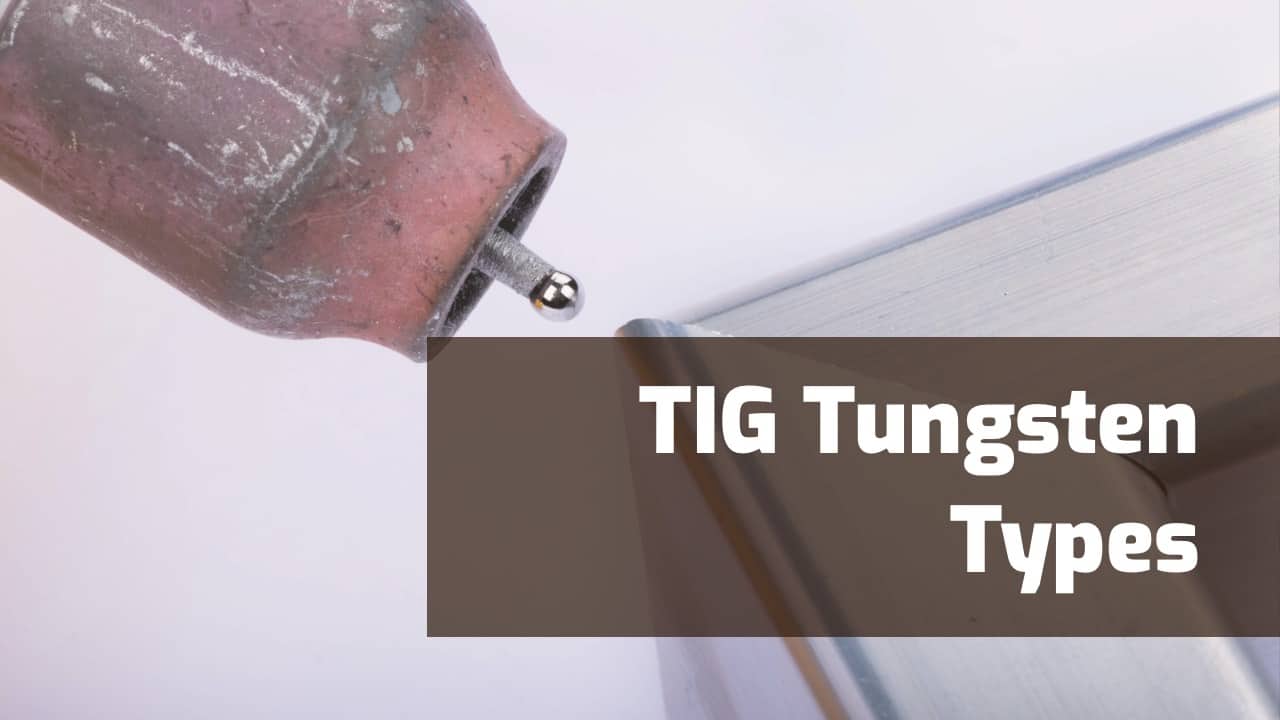Selecting the right tungsten electrode is an essential part of TIG welding.
The current polarity, power source, thickness of the material, and metal type play a role in tungsten selection.
Correctly matching the tungsten electrode with a weld’s requirements saves time and money.
But more importantly, it reduces the effort needed to get the clean TIG welds because it drastically improves the welding performance.
Tungsten Electrode Types and Uses
Tungsten electrodes are classified based on their chemical compositions, namely the principal oxide used and its percentage of the total electrode’s mass.
To make things simpler, all the various tungsten electrodes are assigned a different code and color.
The oxides are primarily thorium, lanthanum, zirconium, and cerium. Their addition can vary between 0.7 and 4%.
The color chart below summarizes the various TIG tungsten electrodes you may come across:
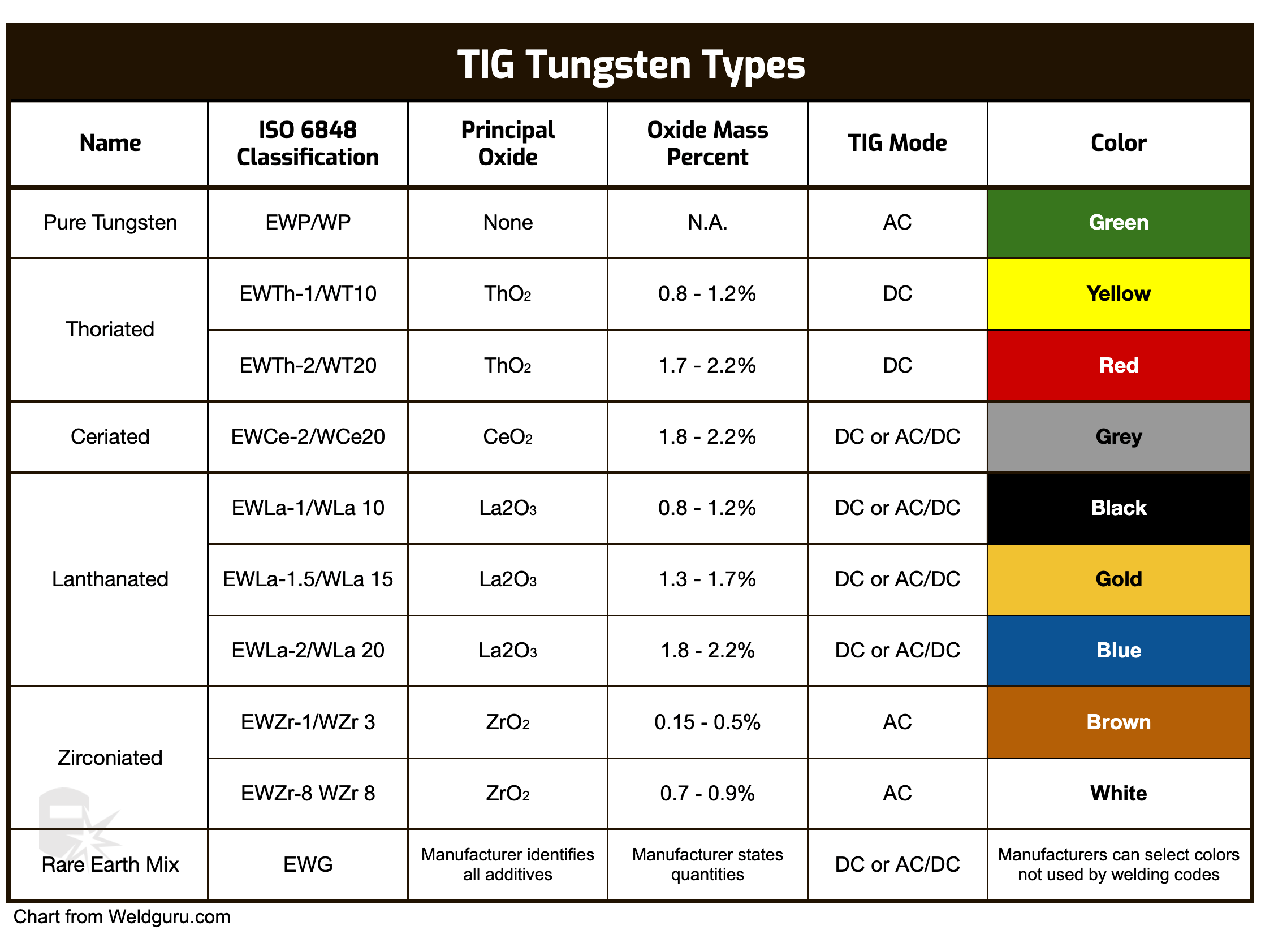
Pure Tungsten EWP/WP (Color: Green)
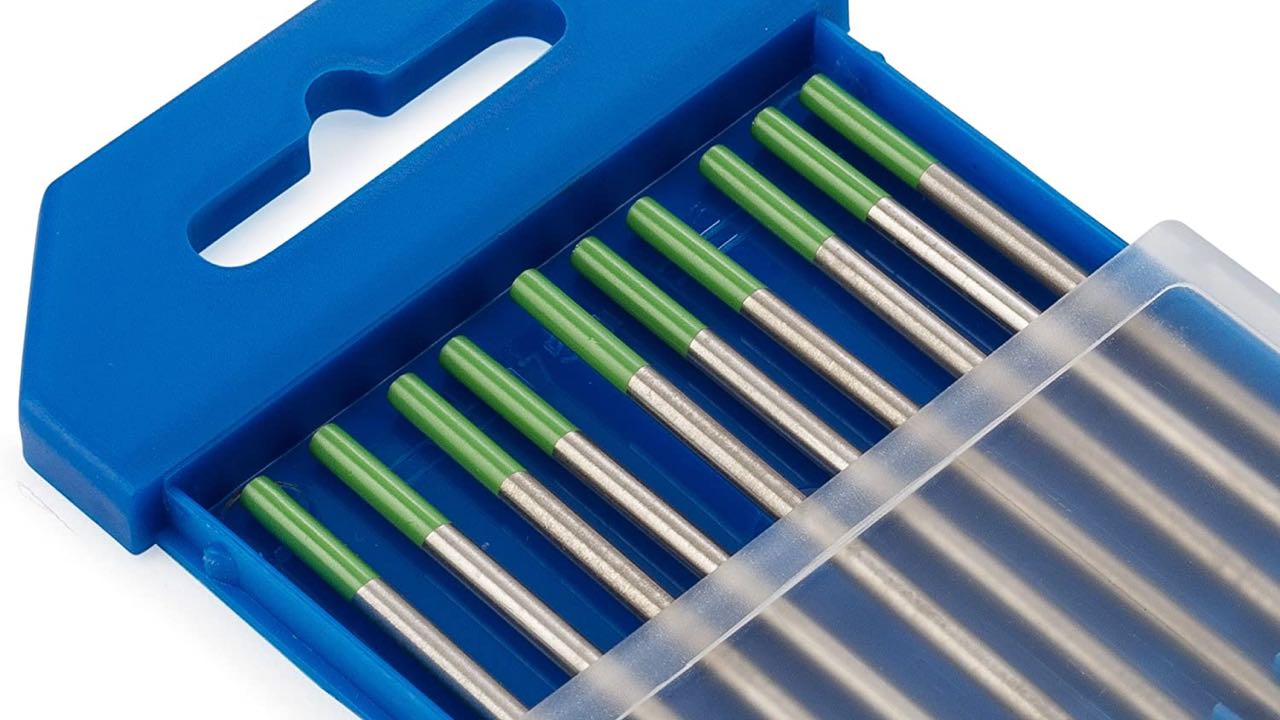
Principal Oxide: None
Pure tungsten electrodes provide good stability when welding with alternating (“AC”) but may be used with direct current (“DC”) and argon or helium shielding gas.
They are typically cheaper, have a lower current-carrying capacity, and lower resistance to weld contamination.
EWP electrodes are mainly used for welding magnesium and aluminum because they maintain a clean, balled end.
However, they are typically used in less critical applications where minor tungsten contamination of the weld pool is acceptable.
See a popular green example here.
Thoriated
EWTh-X electrodes contain thorium oxide (Thoria), which increases the usable life and provides a high electron emission, better arc stability, and improved resistance to tungsten contamination.
Thoria is a radioactive material, and all safety measures must be followed precisely, especially when grinding thoriated tungsten electrodes.
Yellow EWTh-1/WT10
Principal Oxide: 0.8-1.2% Thorium Oxide (ThO₂)
This thoriated tungsten electrode is designed for DC applications. The yellow EWTh-1 maintains a sharpened point well and this makes it desirable for welding carbon steel.
It’s challenging to maintain a balled end when used with alternating current.
Red EWTh-2/WT20
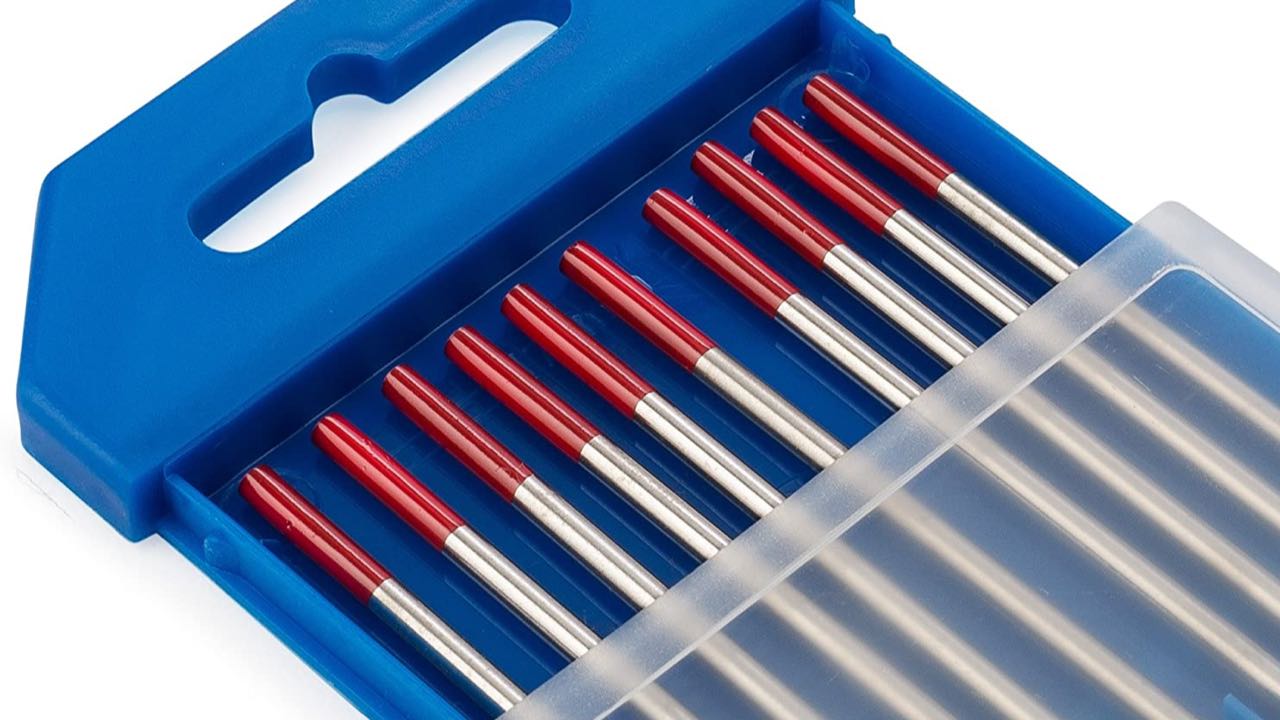
Principal Oxide: 1.7–2.2% Thorium Oxide (ThO₂)
The higher thoria content of the red electrodes provides better operating characteristics than the yellow EWTh-1.
It is a great choice for titanium alloys, nickel alloys, copper alloys, and non-corroding steels.
This electrode has a much higher melting temperature than other tungsten electrodes. So, it experiences a significantly lower rate of consumption and provides a more stable arc.
Given its excellent performance, the red electrode is the most commonly used tungsten option thanks to its longevity and ease of use.
See a popular red example here.
Ceriated EWCe-2/WCe20 (Color: Grey, Formerly Orange)
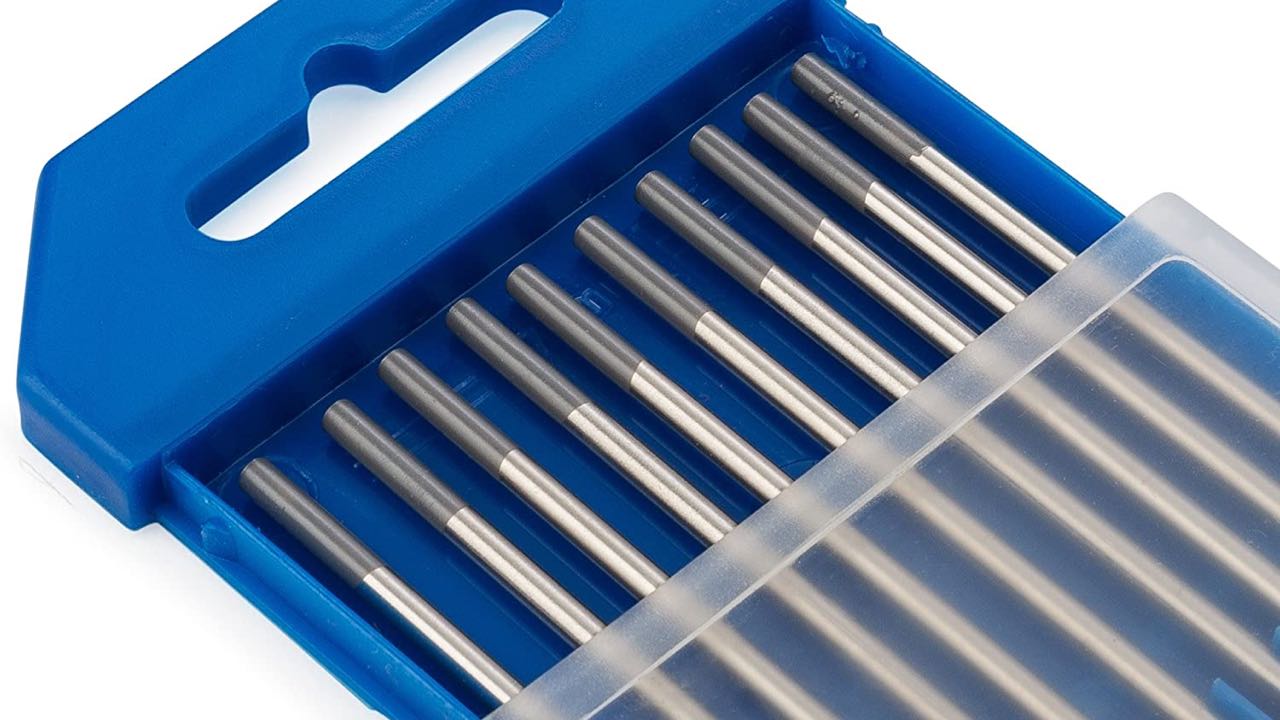
Principal Oxide: 1.8-2.2% Cerium Oxide (CeO₂)
Ceriated tungsten electrodes contain about two percent of cerium oxide (ceria). These electrodes have an easier arc start and stability compared to pure tungsten electrodes.
Unlike thoriated electrodes, ceriated electrodes are not radioactive and can be used equally well with AC and DC. They are characterized by low erosion rate, and a long service life.
This gray electrode is used with non-corroding steels, aluminum, magnesium, titanium, nickel, and copper alloys.
See a popular grey example here.
Lanthanated
Lanthanated tungsten electrodes have similar characteristics as the EWCe-2 above. They contain lanthanum oxide (lanthana) and aren’t radioactive.
In general, lanthanated electrodes are characterized by excellent arc starts and stability, low erosion rate, and great re-ignition ability.
Black EWLa-1/WLa 10
Principal Oxide: 0.8-1.2% Lanthanum Oxide (La2O₃)
The lowest lanthana containing electrode is black in color. It offers pretty much the same characteristics as the ceriated EWCe-2 which makes it a good substitute.
Gold EWLa-1.5/WLa 15
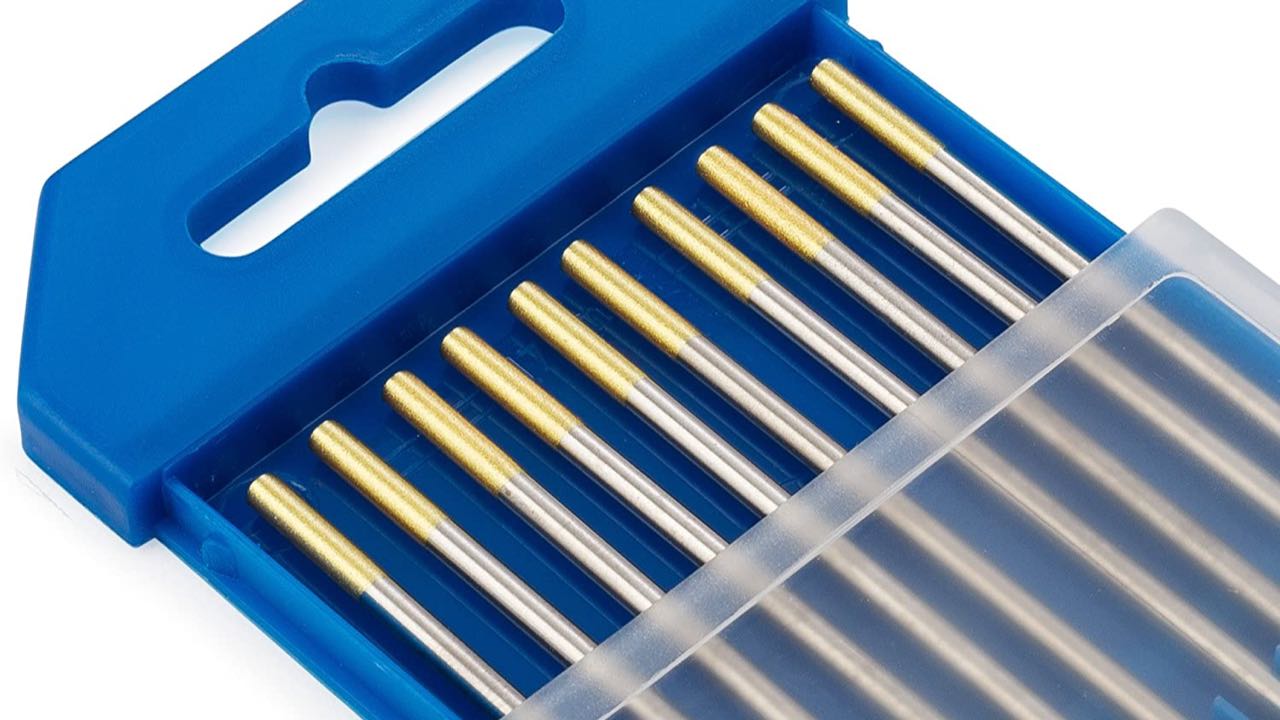
Principal Oxide: 1.3-1.7% Lanthanum Oxide (La2O₃)
The EWLa-1.5 works best as a substitute for the radioactive 2% thoriated tungsten. It’s used in DCEN and AC applications and tolerates a wide amperage range.
See a popular gold example here.
Blue EWLa-2/WLa 20
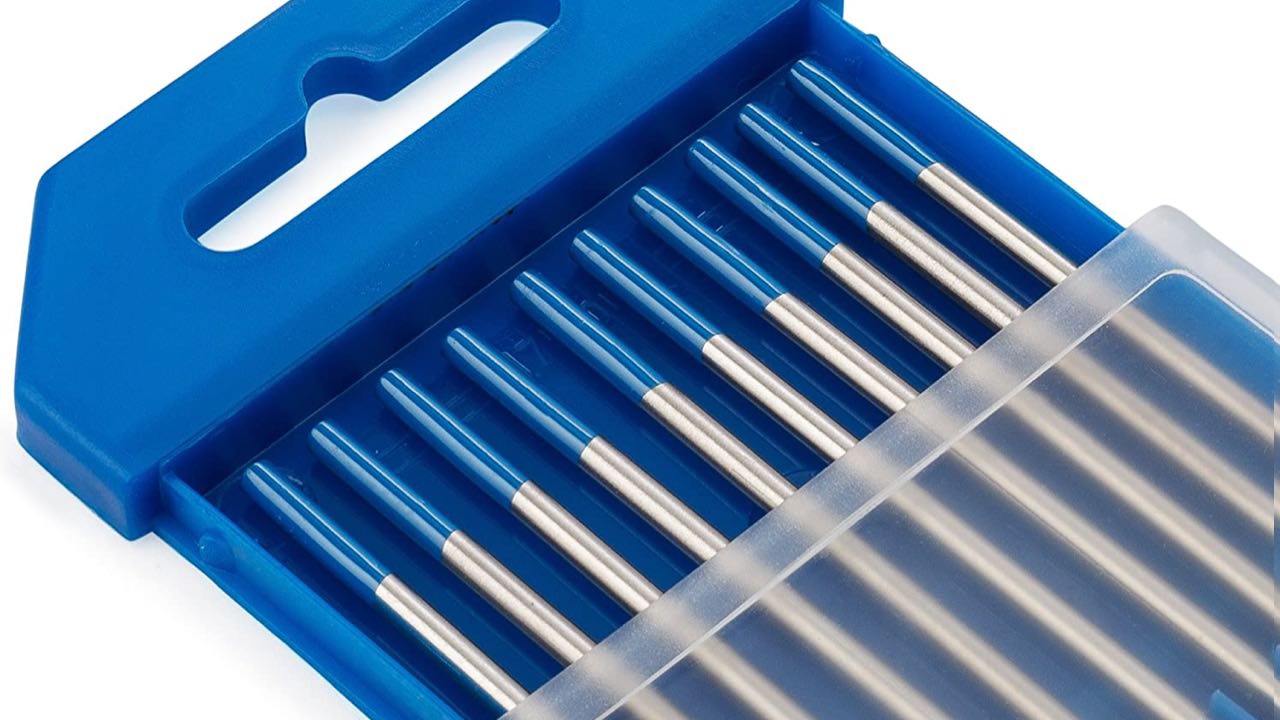
Principal Oxide: 1.8-2.2% Lanthanum Oxide (La2O₃)
The blue lanthanated tungsten is the most popular and best general-purpose electrode for DCEN and AC welding. It provides significantly enhanced arc starts, excellent stability, and a wide amperage range.
See a popular blue example here.
Zirconiated
Zirconiated tungsten electrodes contain zirconium oxide (zirconia). They are used when tungsten contamination of the weld pool must be brought to a minimum.
They can’t be used with DC. However, AC current is ideal because zirconia tungsten retains a balled end while minimizing weld contamination.
Brown EWZr-1/WZr 3
Principal Oxide: 0.15-0.5% Zirconium Oxide (ZrO₂)
This electrode provides a highly stable arc. It forms a balled end well and provides welds with minimal tungsten contamination. The EWZr-1 has excellent current-carrying capabilities which rival the thoriated tungsten.
It’s mainly used for aluminum and magnesium AC welding, especially when high-quality welds are required. This electrode is very resistant to spatter and handles high amperages without issues.
White EWZr-8 WZr 8
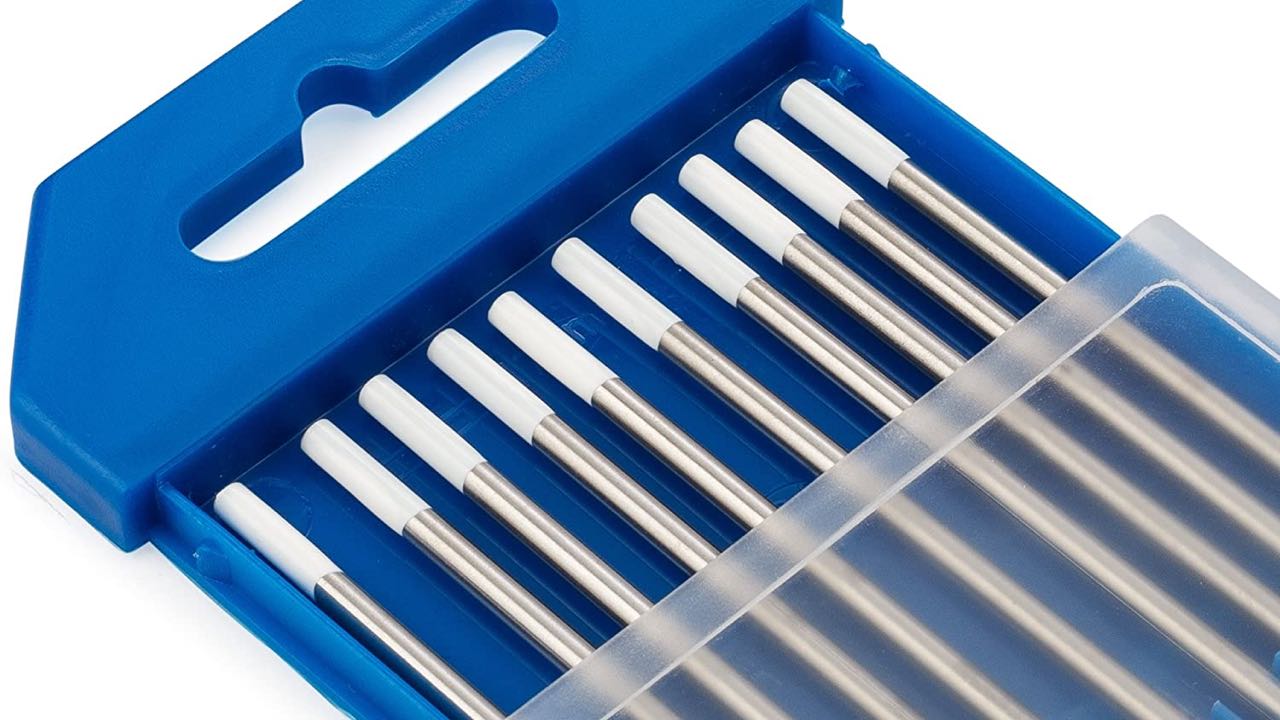
Principal Oxide: 0.7-0.9% Zirconium Oxide (ZrO₂)
Zirconiated tungsten with a white color code has similar but more pronounced characteristics than the lower zirconium content brown version. It’s used when maximum weld purity is required while welding aluminum and magnesium.
See a popular white example here.
Rare Earth Mix EWG
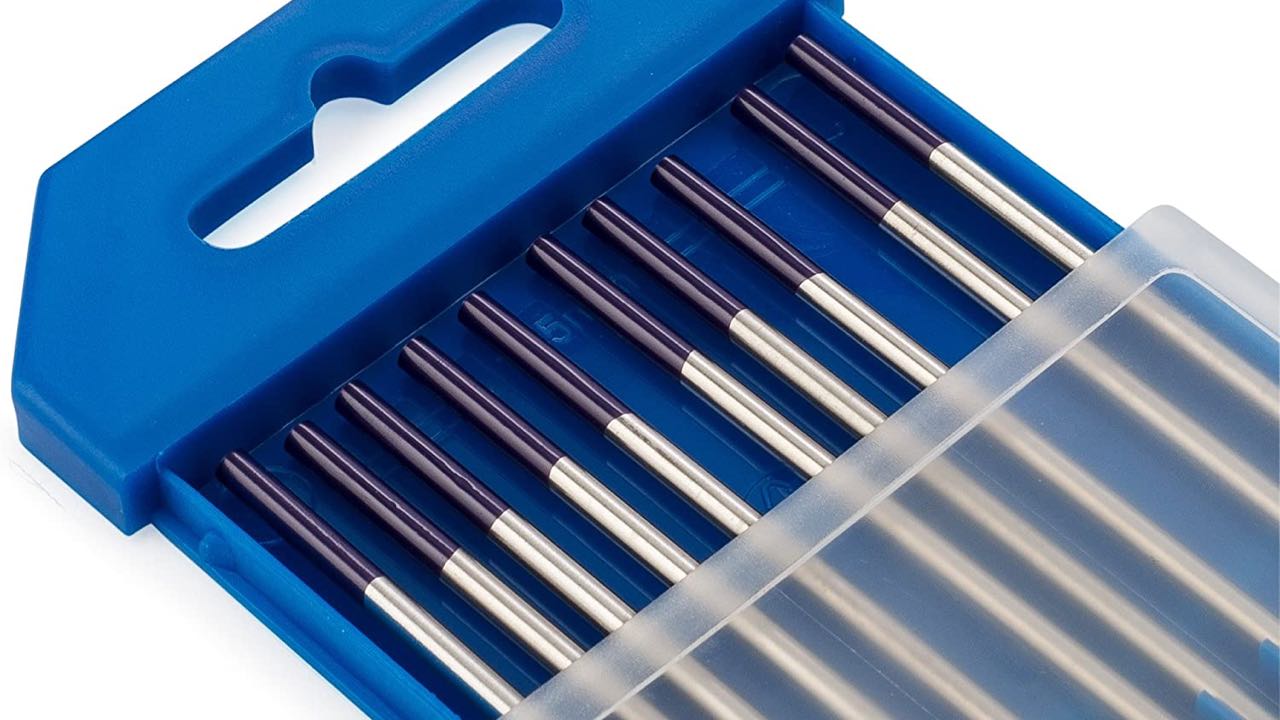
Rare-earth tungsten electrodes are not dictated by the AWS or ISO standards. They can contain any additives and rare-earth metal oxides.
However, the manufacturer must specify the additives and their percentage of the total electrode’s mass. The color most manufacturers choose to use is purple.
Depending on the mixture, rare-earth tungsten electrodes can have very different characteristics. For example, they can provide a stable arc when working with DC or AC current, the ability to withstand high amperages or greater longevity.
Make sure to research any unorthodox tungsten electrodes before doing critical welds. It’s always a great idea to start with the manufacturer’s specification sheet and contact them if vital information is missing.
See a popular rare earth mix example here.
Quick FAQs
What color tungsten is for stainless steel?
The red TIG tungsten is the most commonly used electrode because the 2% thorium mixed with the tungsten is durable and versatile. The thorium allows for easier arc starts and higher current-carrying capacity. The final weld puddle is cleaner since the electrode leaves fewer deposits.
What is purple tungsten used for?
The purple tungsten is a rare-earth electrode that replaces thoriated tungsten without residual radioactivity. Its ease of use and narrow arc makes it preferred for GTAW stainless steel.
What is orange tungsten?
The orange tungsten is the old color code for what is now the grey tungsten electrode. The 2% Ceriated Tungsten is best at low amperage ranges and perform well with A/C or D/C applications using inverter or transformer-based constant current power sources.
They are great for welding low-alloyed steels, non-corroding steels, aluminum, magnesium, titanium, nickel and copper.
What is the Green tungsten?
The green is a pure tungsten electrode that provides good stability when welding with alternating (“AC”) but may be used with direct current (“DC”) and argon or helium shielding gas.
They are typically cheaper, have a lower current-carrying capacity, and lower resistance to weld contamination.
Wrapping Up
TIG welding is difficult to master (read why in this TIG welding guide). But improper tungsten selection is often the cause of poor-quality welds. If you match TIG electrodes with the applications they are designed for, you’ll significantly improve weld quality.
Finding a tailored rare earth tungsten electrode will be your best bet If you need to weld specialty metals in unusual conditions. However, for most welding applications, you’ll do well with either thoriated, lanthanated, or zirconiated electrodes.
Some of these electrodes have overlapping characteristics, but they do have differences. You may need to do some trial and error to find the proper electrode type and size to get the desired results on a specific metal and thickness.
For example, if the 2% thoriated electrode matches your application but doesn’t provide the perfect results, you should try its alternative like EWLa-1.5.
Keep testing things. There is no substitute for hands-on experience. The tungsten classification is only one of the many TIG welding variables that determines the best performing tungsten electrode for a given weld.
